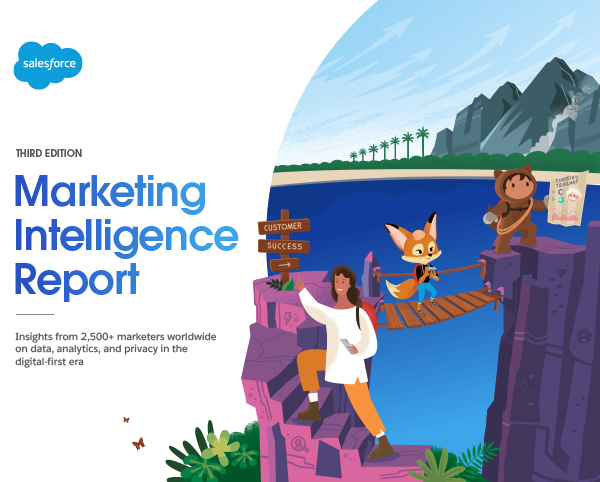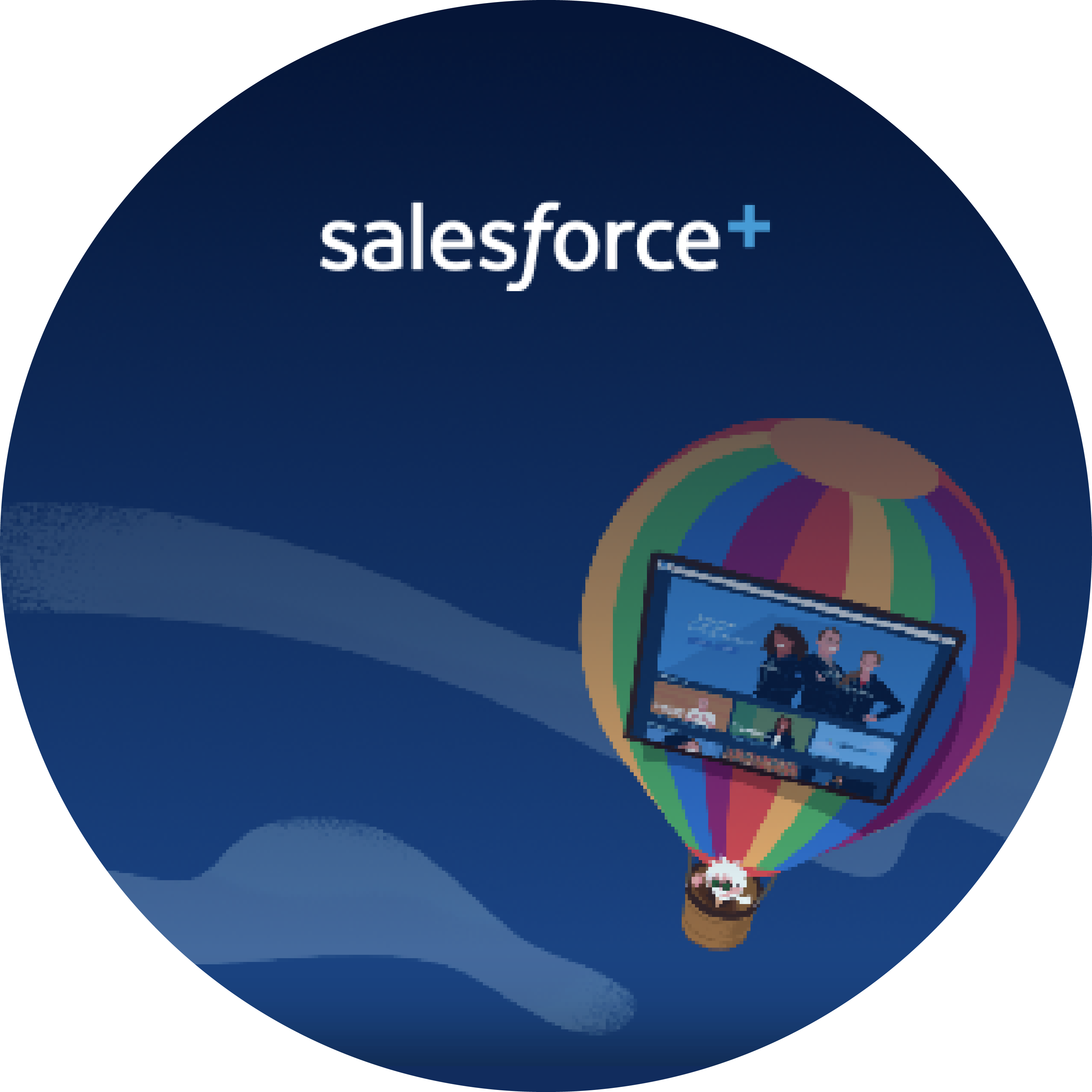The Marketer’s Guide to Great Customer Relationships:
Data + Privacy + Personalization
Sure, customer relationships improve when customers feel they’re understood. But here’s the thing: Today’s customers expect more. Brands have to prove that they value their customers, more than just merely understand them.
How can brands show their customers they’re valued? By building relationships that are rooted in trust and transparency. To do this well, marketers must respect, value and prioritize the boundaries of customer data privacy. That, in turn, will lead to outstanding personalization and better customer relationships.
Easier said than done, right? With the rapid pace of digital transformation, ongoing regulatory changes and rising customer expectations, balancing personalization with privacy and data is one of the biggest challenges that marketers face today.
This analysis of achieving great customer relationships—and the trends and challenges around data, privacy and personalization that pull it all together—is drawn from two essential studies: The seventh edition of Salesforce's State of Marketing, and Salesforce’s Marketing Intelligence Report, and analysis from experts both within and outside the Salesforce Research & Insights team.

Seventh Edition State of Marketing
When it comes to collecting data, brands must hold themselves accountable to their customers.
Data & customer relationships:
you must provide value
in exchange for data
The first cornerstone of great customer relationships is data. Information about a user or customer is critical to delivering personalized experiences. But now people have more control over how companies use their data. It's important that there is a clear benefit to sharing data and clarity around how it is used.
Here’s an example: To provide the most accurate recommendations of new shows to watch, streaming companies such as Hulu collect a huge amount of data from customers, including not only what they watch but when they watch it. That information helps create targeted recommendations which users can either like or dislike. Each user has a personalized stream of shows that can be tailored in the order they appear. The goal is to create a curated feed of personalized content for each user, not just a random list of shows.
The Salesforce Research & Insights team studied both consumers and marketers to understand their perspectives on personalization and data usage in the fifth edition of Salesforce’s State of the Connected Customer. Salesforce found that consumers and marketers are pretty much aligned on both the concerns and perceived benefits of personalization, but the challenge for marketers is to balance consumers’ trust with business priorities. After all, trust can be easily broken but difficult to regain.
The sudden proliferation of personally identifiable data radically shifted how brands are able to target and interact with customers. But with the loss of third-party cookies, the efficient collection of first-party data is becoming a necessity, with consumer information being inferred from websites, apps and on-page behaviors, as well as an individual’s interests or intent.
Even more effective for customer relationships is zero-party data—data that a customer willingly and intentionally shares with a brand. It can include preference data, purchase intentions, personal context and how individuals want the brand to interact with them.
of customers expect companies to clearly state
their values

88%
of customers say
they do
50%
but only



Privacy & customer relationships:
it’s essential to make your marketing privacy-first
The introduction of privacy legislation and bans on third-party browser cookies have spurred consent-forward approaches to information gathering, illustrated by this common cookie popup:
Privacy is the essential second critical element in assuring outstanding customer relationships, along with data and personalization.

Personalization & customer relationships:
loyalty thrives when customers feel you understand them
Digital channels continue to dominate customer engagement, and it’s essential for organizations to bridge new ways of engagement with tried-and-true ones: 73% of customers expect companies to understand their unique needs and expectations. Personalization is the critical third leg in developing superior customer relationships, along with data and privacy.
Customers enjoy the added benefit of a better digital experience with personalized offers, whether they're buying from one of their favorite consumer brands or making a B2B purchase. On the B2B side, personalization can also be extended through conversations with sales reps. If marketing and sales teams are working together, sales reps have the insight they need to have relevant, valuable conversations.
Take NBCUniversal for example. Their ad sales and marketing teams are working together to ensure that NBCUniversal’s ad sales are data-driven. When a prospect engages with their marketing campaigns and reaches an engagement threshold, an automated notification informs a sales rep. Sales reps saw a dramatic increase in open rates by personalizing the next interaction using behavior insights collected from the marketing team. This collaboration also helps drive more pipeline and close more deals.

Marketing has always been about building relationships, but how do you build relationships that engage the digital-first customer? Learn how the most exciting sport on Earth, Formula 1, is tapping into their data to drive a better customer experience.
But despite their best efforts, marketers still haven’t fully cracked the code on delivering personalized experiences—much less, ones that include the level of transparency customers now expect. Consider:
of marketers are completely satisfied in their ability to create more relevant experiences with their data.
With the current building in marketing and retail—especially when it comes to the collection and use of personal data—adding transparency and responsible personalization into your marketing
process will be key.
Spotlight: generations
It’s no secret that the various generations respond to marketing differently, view privacy and transparency differently and respond to brand loyalty initiatives differently. It would not be surprising that developing strong customer relationships with these various cohorts represents an enduring marketing challenge.
Born 1946–1964

The intersection of great customer relationships
The ultimate goal of balancing data, privacy and personalization is fostering long-lasting customer relationships and growing revenue. Here are three ways you can think of the convergence of data, privacy and personalization that together result in outstanding customer relationships:
Salesforce+ is a plan in action
Consumers want to be recognized, treated uniquely and have their personal information used carefully. Most consumers expect their offers to be personalized, so this offers a great opportunity for marketers to act on that expectation. With the current trust revolution building in marketing and retail, especially when it comes to the collection and use of personal data, adding transparency and responsible personalization into your marketing process will be key.
Consider the free streaming service, Salesforce+, which includes live experiences, original series, podcasts and other programming that is entertaining and educational. It’s an instance of value exchange, where the consumer willingly provides personal data in exchange for entertainment or new knowledge. In return, consumers enjoy the added benefit of having tailored content experiences and personalized marketing messages.
1. Use and collect individual information appropriately.
Build in time to reflect on what information is being collected and define the value for data-driven marketing and segmentation.
2. Be transparent about data use.
Use clear language to describe your data strategy. As artificial intelligence (AI) takes on more of the work of personalization, there needs to be transparency in communicating with customers why these models are providing them with personal experiences.
3. Give consumers control and clarity.
Consumers and regulators are requiring transparency of data use. Consumers want to know why marketers need the data they collect.
4. Provide clear benefits in exchange for data.
Tell customers in clear, concise language how sharing data will offer them more relevant information and personalized offers.
Third Edition Marketing Intelligence Report





Marketers must gain customer trust by using data in an effective, ethical way.

76%
64%
77%
62%
76%
67%
Customer unease lingers. A majority say organizations gather more information than they need, and many feel businesses aren’t forthright about how they use data. Nearly eight in 10 say additional transparency increases their trust.



61%
57%
26%
32%
29%
33%
Marketers must remain vigilant about customer views of how their private data is being handled: 61% of consumers feel like they’ve lost control over how their personal information is used. This may be seen dramatically in the results of a study by Elizabeth Stoycheff, associate professor at Wayne State University, on consumer response to cookie popup notifications. She found that cookie notifications triggered strong negative feelings, suggesting that website cookies are not perceived as a helpful online tool, and in fact are a hindrance to accessing information and making informed choices about one’s privacy permissions.
Marketers are slowly getting accustomed to the limitations placed on the use of customer data. This is thanks in no small part to a push to better understand and manage customer preferences: 78% of marketers say they have a comprehensive view of all customer consent elections. While marketers are increasingly exceeding the privacy standards and laws they’re held accountable to, this trend coincides with an uptick in customers' anxiety on the issue.
Brands can stand out from the competition by prioritizing trust and respecting the limits of personalization.
Chapter 2
Chapter 1
–Lidiane Jones, executive VP and general manager, Digital Experiences, Salesforce
“Today, digital-first customers expect more personalized experiences than ever before, but at the same time deserve to be in control of how their personal data is used. Companies must demonstrate that privacy is a top priority to earn the right to deliver these experiences and earn customer trust.”
Chapter 3
Baby Boomers
Only 33%
of consumers expect their offers to be personalized.
52%
—Martin Kihn, senior VP, strategy, Marketing Cloud, Salesforce
“Without personalized targeting, prospective customers would be bombarded with ads that have no relevance, no value.”
Drive customer engagement with data and personalization

Born 1977–1995
Millennials or Gen Y
Born 1965–1976
Generation X
Born 1996–2015
Gen X, iGen, or Centennials
Know your audience as a single source of truth, bringing together all customer data from across your business to understand the needs of individual customers and segments.
Humanize the customer experience by realizing these contact moments, responding to customers in a consistent way and establishing trust in guarding ethical data usage.
Optimize your customer engagements by improving every moment in the customer experience, including interactions with others in the organization such as reps and service agents.
Salesforce also recognizes that this value exchange offers a unique opportunity to safeguard customer data and provide transparency about when and how that data is used. By prioritizing trust as the No. 1 company value, Salesforce balances personalized marketing with its commitment to protecting the data and security of customers.
Prioritizing data starts with communicating honestly and transparently and treating your customers as unique individuals.

To understand both marketer and consumer perspectives on beneficial and appropriate personalization, here are four tips that outline a North Star for ethical, data-driven marketing practices:



About
Ad Age Studio 30 is the creative content arm of Ad Age. Built on the same bedrock of journalistic integrity, Ad Age Studio 30 specializes in multichannel membership content for Ad Age subscribers, as well as custom and sponsored content that resonates with our audience. To partner with Ad Age Studio 30, email James Palma at jpalma@adage.com.
About

Salesforce is the global leader in CRM, bringing companies and customers together in the digital age. Founded in 1999, Salesforce enables companies of every size and industry to take advantage of powerful technologies—cloud, mobile, social, voice and artificial intelligence—to connect to their customers in a whole new way.
Salesforce Customer 360 is our vision for how we help customers with their digital transformations. With Customer 360, every team—sales, service, marketing, commerce, and beyond—can have a single, shared view of their customers on an integrated CRM platform powered by AI. For information, please visit www.salesforce.com.

We use cookies to enhance your browsing experience, serve personalized ads or content, and analyze our traffic. By clicking Accept All you consent to our use of cookies. Read more.
We value your privacy.
trust revolution
Millennials are the most digitally inclined generation, followed closely by Gen Z—a cohort yet to fully come of age.
Gen Zers are 1.6 times more likely than baby boomers to prefer engaging through digital channels.
74.5% of the 65.8 million Gen Xers are active on social media on at least a monthly basis, according to eMarketer, and are considered “coupon consumers.” Targeted, personalized offers are extremely attractive to this cohort, so when they provide personal data they act on the offers or responses. Gen Xers are considered brand loyal, so establishing brand trust with this group is essential.
Millennials are considered mobile-first. Attribution is arguably most important with this generation, since they are prone to using multiple digital channels before making a purchase decision. But they are the least brand loyal, meaning brands must find ways to engage them with value-exchange propositions.
Millennials are more distrustful of marketing messages than any previous generation, and they value authenticity and honesty over flashy advertising. Value exchange and the voluntary offering of data in exchange for personalization goes a long way with this cohort. Younger generations already have a strong grasp of this form of value exchange, which goes across all media, including connected TV (CTV).







What is a Customer Data Platform, anyway? The Salesforce team explains how it uses its own CDP to make compelling customer moments that become trusted relationships.
How Salesforce turns data into meaningful customer moments.

Discover how NBCUniversal transformed their digital experience by connecting with consumers and serving the right content at the right time.
Deliver the best personalized experience at scale


















1
2
3
4
5
Communicate honestly and transparently
Use customer information responsibly
Treat me as a person, not a number
Resolve issues proactively
Communicate proactively




































—Wes Bell, marketing digital director, Idaho Central Credit Union
"Personalization not only drives engagement, it establishes relevancy and builds trust with your customer. When you prioritize privacy and security first, it enhances the value of the data you leverage to power your digital marketing efforts. By prioritizing privacy and security, you are building stronger customer relationships, protecting your customers' valuable data and protecting your organization’s reputation."


—Wes Bell, marketing digital director, Idaho Central Credit Union
"Personalization not only drives engagement, it establishes relevancy and builds trust with your customer. When you prioritize privacy and security first, it enhances the value of the data you leverage to power your digital marketing efforts. By prioritizing privacy and security, you are building stronger customer relationships, protecting your customers' valuable data and protecting your organization’s reputation."






















































































